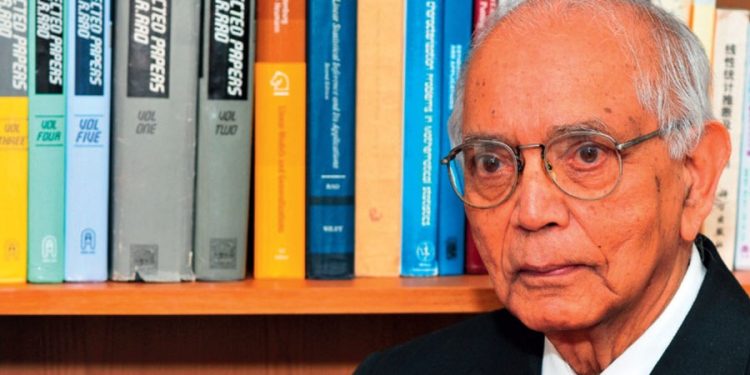Calyampudi Radhakrishna Rao, an Indian-American mathematician and statistician, is set to receive the 2023 International Prize in Statistics, which is considered the equivalent of the Nobel Prize in the field.
Rao’s significant contributions to statistics and its applications, including medical research, have earned him this prestigious award, which comes with a cash prize of $80,000. The award ceremony will be held in July during the World Statistics Congress of the International Statistical Institute in Ottawa, Canada.
In 1945, Rao published a remarkable paper in the Bulletin of the Calcutta Mathematical Society that presented three fundamental results that revolutionized the field of statistics and established statistical tools that are still heavily used today in science. The first result, now known as the Cramer-Rao lower bound, provides a way to determine the maximum possible accuracy of an estimation technique.
The second finding, called the Rao-Blackwell Theorem, after renowned statistician David Blackwell, presents a method for improving an estimate to an ideal one. These two findings are the foundation of much of statistics. The third conclusion, named “information geometry,” helped create a new multidisciplinary area that has since prospered, enabling scientists to mine data more effectively for insights.
Guy Nason, chair of the International Prize in Statistics Foundation said, “In awarding this prize, we celebrate the monumental work by CR Rao that not only revolutionized statistical thinking in its time but also continues to exert enormous influence on human understanding of science across a wide spectrum of disciplines.”
CR Rao, who is currently 102 years old, is a pioneering figure in the field of statistics, and his contributions have had a significant impact on various scientific disciplines. The International Prize in Statistics is a well-deserved recognition of his groundbreaking work, and it will undoubtedly inspire future generations of statisticians and scientists.
The utilization of information geometry has proven beneficial in optimizing observations of the Higgs boson and improving the functionality of the Large Hadron Collider, the largest particle accelerator worldwide. This method has also played a significant role in various scientific fields, such as data science, artificial intelligence, shape categorization, signal processing, and image segregation.
Calyampudi Radhakrishna Rao was born in Hadagali, Karnataka, to a Telugu family, and received his primary education in Andhra Pradesh. He completed his postgraduate studies in statistics at Calcutta University and mathematics at Andhra University in 1943. He went on to pursue his doctorate at King’s College, Cambridge University and obtained a DSc degree from the same institution in 1965.
Rao’s first professional experiences were at the Anthropological Museum and the Indian Statistical Institute in Cambridge. He held many prominent positions, including director of the Indian Statistical Institute, Jawaharlal Nehru Professor and National Professor in India, University Professor at the University of Pittsburgh, and Eberly Professor and Chair of Statistics and Director of the Center for Multivariate Analysis at Pennsylvania State University.
At present, he serves as a research professor at the University at Buffalo and a professor emeritus at Pennsylvania State University. Rao has received numerous accolades throughout his career, including the Padma Bhushan in 1968 and the Padma Vibhushan in 2001 from the Indian government.
In his seminal paper published in 1945 in the Bulletin of the Calcutta Mathematical Society, Rao presented three fundamental results that contributed to the development of modern statistics and continue to be vital statistical tools in science today.











